Advanced Content Writing Tips for SaaS Companies in 2022
Content writing for SaaS is the need of the hour. SaaS products account for about 25% of all software and the number has just started to grow.
In fact, the software as a service (SaaS) market is growing exponentially. And the industry is expected to grow with an average annual growth rate (AAGR) of 18%.
What’s more interesting is that around 99% of organizations across the globe are already using one or more SaaS solutions.
It’s hard to count the exact number of SaaS companies that have launched products. However, there are at least 7,000 registered SaaS companies and most of them are in the United States.
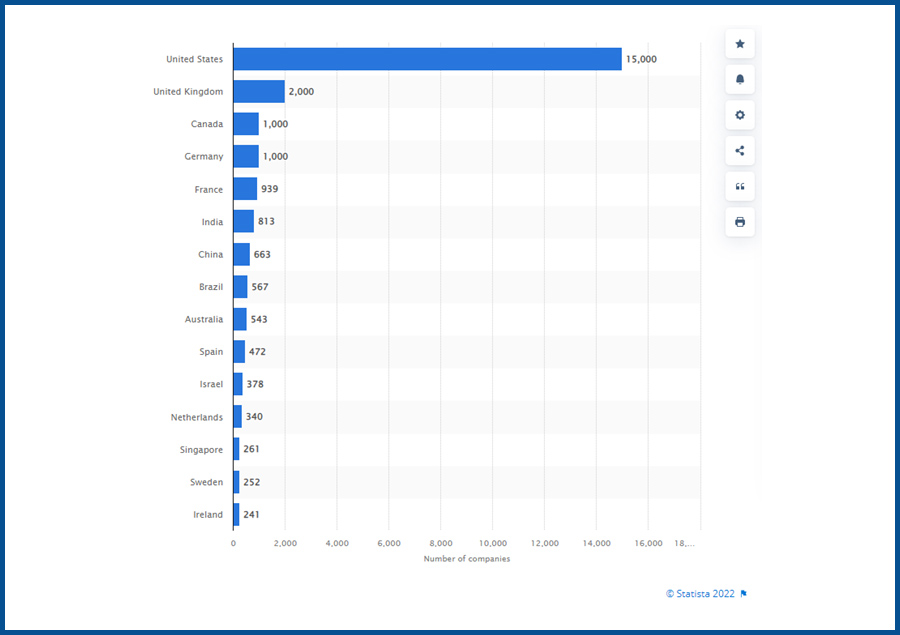

With such fierce competition, it’s hard to stand out in the market. Even if you have a good SaaS product, you cannot attract an audience without good marketing.
That’s where you will need content writing for SaaS.
To reach and educate your audience, you need a SaaS blog writing company. You need content production for SaaS to engage customers at every step of the funnel.
In case you are unaware of SaaS content writing, this article is for you.
We have accumulated all the information that you need to know about SaaS writing. This will also help you find the best SaaS content writing firm.
But first, let’s clarify the basics and know what SaaS writing is.
What Is SaaS Content Writing?


SaaS content creation is the process of marketing your software product through writing. This includes writing blogs, social media posts, and using all types of content to promote SaaS products.
The goal is to spread brand awareness, educate the customers, and convert visitors into buyers.
Most companies start content production for SaaS by crafting ads to highlight the product’s features. For this, you can also hire a SaaS blog writing company or B2B SaaS copywriting services.
What Is B2B SaaS Content Writing?


There are two types of SaaS products in terms of users.
- B2B (Business to Business)
- B2C (Business to Consumer)
Most of the SaaS products fall into the category of B2B. These are software that aim to solve issues of large enterprises and SMBs. Therefore, the content produced for SaaS is often named B2B SaaS content writing.
Is SaaS Content Writing Different from Other Writing Types?


Not all types of content are the same as each has its own merits. Experts use different content marketing techniques for different campaigns, and the same goes for SaaS.
The main difference between SaaS writing and other types is the purpose.
SaaS writing is mostly used to educate the audience and show them how the product works. This includes writing informative posts about cool features and guides for users. But it also includes B2B SaaS copywriting to convert leads into consumers.
There are a few key points to consider when you are writing SaaS content. You must know let the readers know:
- What problem do your SaaS products solve?
- What are its core features and key benefits?
- How is your SaaS product innovative?
- What makes it different from other SaaS products?
- What are other ways to use your SaaS products?
Things to Do before SaaS Content Creation


Before you start working on SaaS content creation, there are certain factors to consider. You can put your best foot forward by paying attention to these factors.
These factors will make content writing for SaaS easy for you.
Identify Your Goals
Identifying your marketing goals is the first step toward good SaaS content writing. In fact, it’s an integral part of SaaS content strategy.
You may have more than one goal for your SaaS product. Therefore, stating which goal you want to achieve first becomes more important. After identifying or prioritizing your goals, you can start working on a SaaS content strategy.
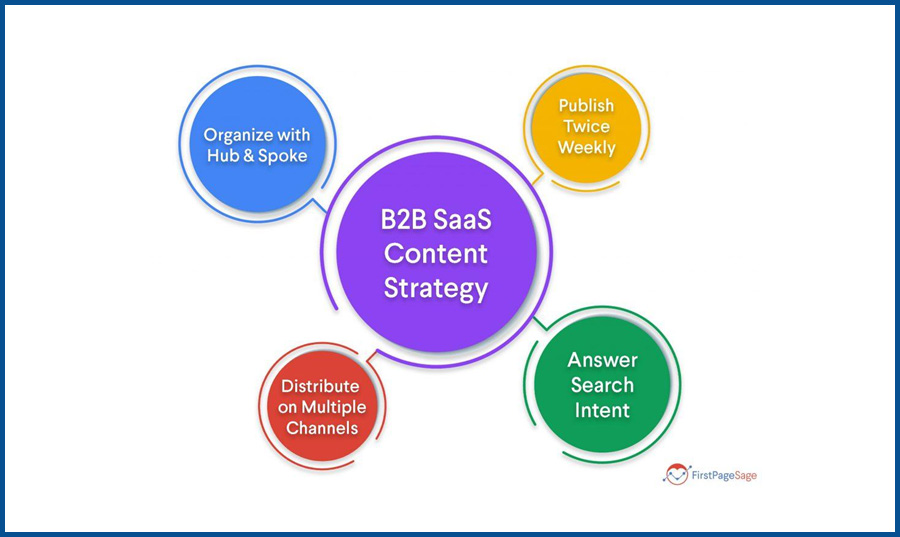

For example, your primary goal as a B2B SaaS writer can be increasing product awareness. You may also want to generate and improve leads or monthly recurring revenue (MRR).
Once you are decided that you are working on such goals, you will focus on the right type of content. This will help you build a content creation and marketing strategy to get better results.
Define your Buyer Persona
Defining buyer persona or ideal customer profile (ICP) is crucial for SaaS content creation. As a content writer for SaaS, this will help your ideal customer base.
Once you know for whom you are writing, you can easily identify their pain points. You will know what their interests are and what issues they want your product to solve. Thus, you can easily grab their attention and can engage them through B2B SaaS copywriting.
To create a buyer persona, you will have to conduct in-depth market research. You must consider:
- What are their main interests?
- What are their biggest challenges?
- What alternative solutions are they using?
- What key features do they want in the product?
Once you have done that, you can easily create a B2B SaaS strategy for your audience. You will be able to understand how they think and what challenges they are facing.
This will also help you understand their user journey as a B2B SaaS writer.
Perform Keyword Research
Keyword research is an important part of SaaS content creation. By using the best SEO tools, you can find out what your audience is searching on search engines.
This is a practice that will make content writing for SaaS a whole lot easier.
You will be able to create content that your audience is searching for on the internet. Moreover, you will know what solutions are looking up on search engines. This will help you to ace the game and will definitely bring more leads and more sales.
If you want to get organic traffic, you should perform keyword research more often.
Focus on the Search Intent
Keyword research can help you reach the target audience quickly. But search intent is the key if you want to engage the right audience.
People only search when they have a reason to do so.
This means they are looking for useful information or the right product. Consumers often do research before making a purchase to ensure they are buying something valuable. That’s where you can take advantage of keywords and the search intent.
Search intent will also help you understand your audience’s needs and why they would buy your product. Since you will be writing about their requirements, they will be hooked to your content. Ultimately they’ll spend more time reading and exploring your SaaS product.
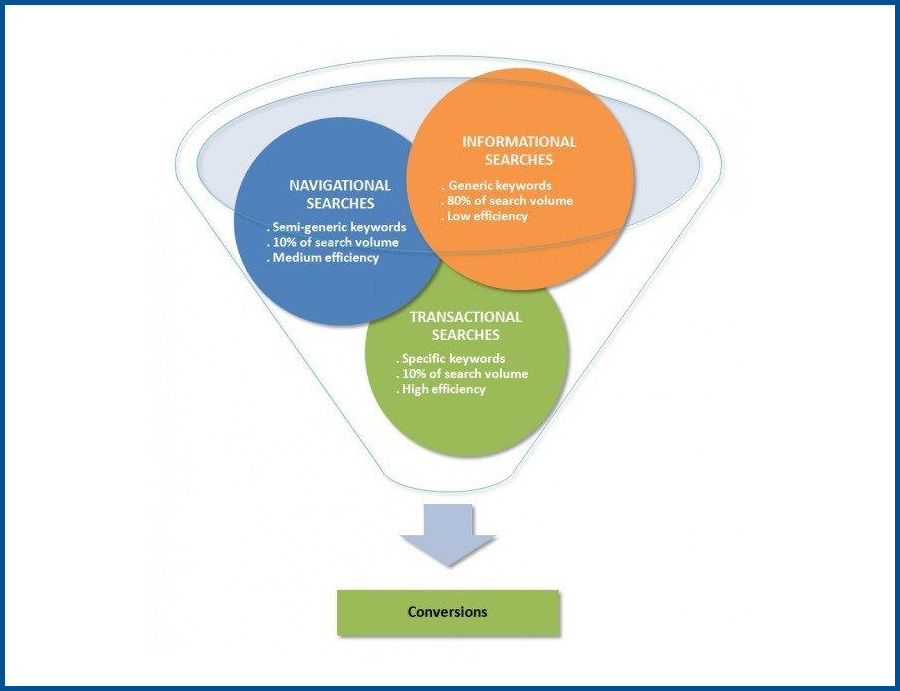

If you could provide accurate information or the perfect solution to buyers’ needs, they will happily invest in your SaaS product.
Different Types of Content Production for SaaS
Content writing for SaaS is all about understanding the needs of your audience. You must produce content keeping in mind your business goals. The main goal of SaaS content is to:
- Offer valuable information
- Inform what problems it resolves
- Guide users on how your product works
- Convince them to give it a try
Another way to create quality content is to write for each stage of the marketing funnel. There are three main stages of a market funnel that describes buyers’ journey.
- TOPU (Top of the Funnel)
- MOFU (Middle of the Funnel)
- BOFU (Bottom of the Funnel)
At each stage of the funnel, you will need different types of content for your audience.
You must create content for SaaS that deals with all three stages of the funnel. This will allow you to generate more traffic and convert more visitors into leads.
Now let’s discuss the different types of content that you’ll need for your SaaS product.
Produce Product-Led Content
This is a content marketing technique that most SaaS companies use to promote their products. They build the narrative and content solely around their products.
This is a way to enlighten consumers through user guides and documentaries. By producing product-led content, you can directly show your audience how it can offer them relief. You will be telling them how your product can put them out of misery.
Focus on Pain Point Content
This is the type of content that is directly aimed at the pain points. You do content writing for SaaS by educating users on how your product resolves the issues.
This is the type of content that can generate quality leads. These are the BOFU (bottom of the funnel) articles that can earn you more revenue and offer better ROI.
You can address different pain points separately in more than one article. And with each piece of content, you can drive more traffic and will get more leads.
Publish Data-Driven Content
This is the type of content that will establish you as an authority on search engines. All you need to do is publish data-driven content containing original research. You can add surveys, industry analysis, and statistics to such content pieces.
Such content creation for SaaS will also improve your SEO.
That’s because other brands and websites will refer to your data and you can get backlinks. As a result, you will be able to get more backlinks and hence, will get a higher ranking on search engines.
Hire Subject Matter Experts
Content production for SaaS can be tough if you don’t have an in-house team. You will have less time to write and as a result, your content strategy will suffer.
That’s where a SaaS content writing company can help you out.
A SaaS content writing firm normally has a large team of subject specialists. These are expert writers who have a good grasp of industry knowledge. By hiring them, you can get quality content in less time and can publish posts regularly.
The best part is that you will get actionable content that can trigger leads.
Post Long-Form Content
There was a time when posting long-form content could offer a top position on search engines. But it has now become a necessity if you want to rank on SERPs.
The reason behind this is that long-form content often offers in-depth analysis. Since such content pieces are thorough and well-researched, search engines rank them higher. More importantly, the audience loves to read long-form articles when they are finding solutions.
According to SEMrush, the longer the content, the more traffic it will get.
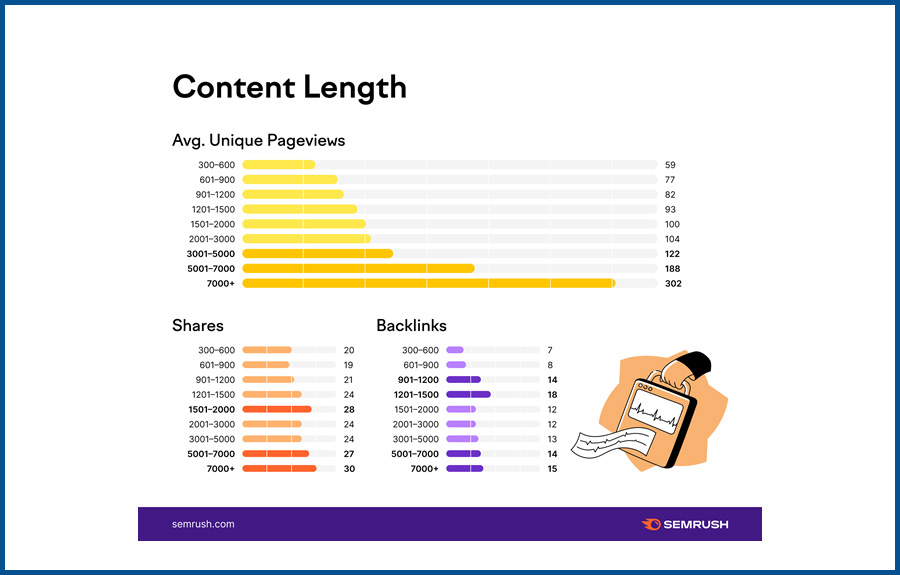

Backlinko found that long-form content generates more backlinks as compared to middle or short-form content.
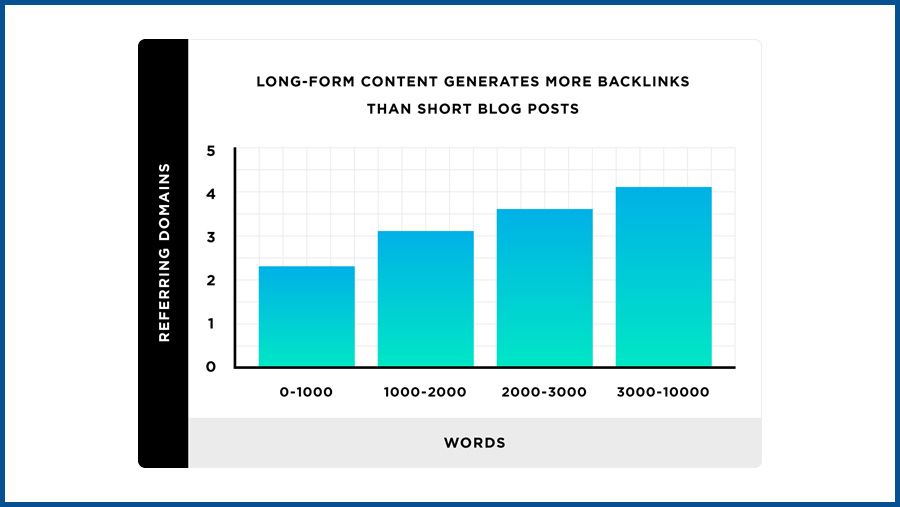

That’s why you should post long-form content as a SaaS business.
Create Authority Content
Another way to boost your SaaS marketing is by establishing topic authority. This is a key ranking factor that can help you secure top rankings on google.
The more content you publish on a specific topic, the more keywords you’ll get ranked. And once you have enough content covering that specific topic, Google will start considering you as an authority on that topic.
For example, if your SaaS product is about the restaurant business, you should publish content relevant to the industry. You must cover topics that restaurant lovers want to read about. Once you do that, you will start getting higher rankings because Google will see your site as an authority.
This is why establishing authority while creating content for SaaS is important. Once you get topical authority on your niche, your content will start getting higher rankings, more traffic, and ultimately more leads.
Craft Conversion-Focused Content
The main goal of SaaS marketing is to generate leads and get more conversions. It’s good to have informative, educational, and long-form content but if it does not generate sales, it’s useless.
There is no benefit of getting high traffic if you are unable to convert it. If visitors aren’t signing up, booking demos, and getting trails, you are wasting your investment.
This is why we recommend you should also focus on B2B SaaS copywriting.
With compelling copy, you will have conversion-focused content that can generate leads. You will be able to engage and entice visitors to take desired actions with persuasive words.
Takeaway Words
Content writing for SaaS takes time and requires effort if you want to get results. But if you follow the right strategy, you can promote your product through B2B content writing. All you need to do is develop a strategy, perform keyword research, and right according to search intent.
In case you don’t know where to get started, hire a SaaS content writing company. There are a number of marketing companies that offer content writing services at affordable rates.



Leave a Comment